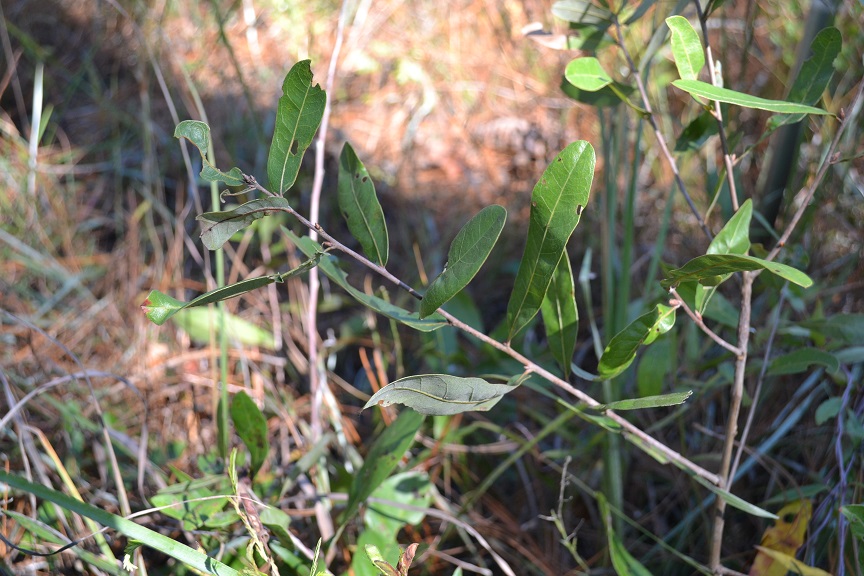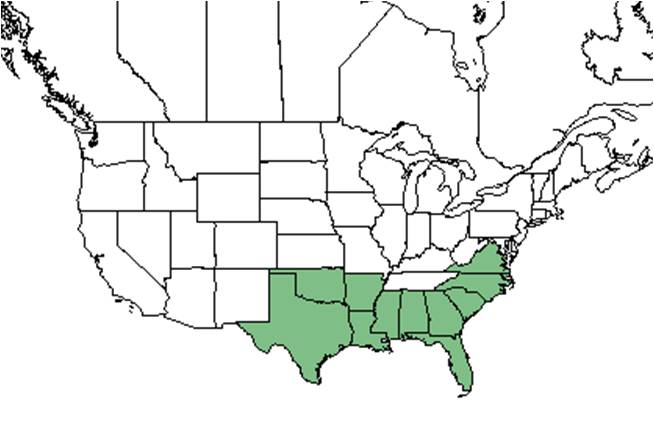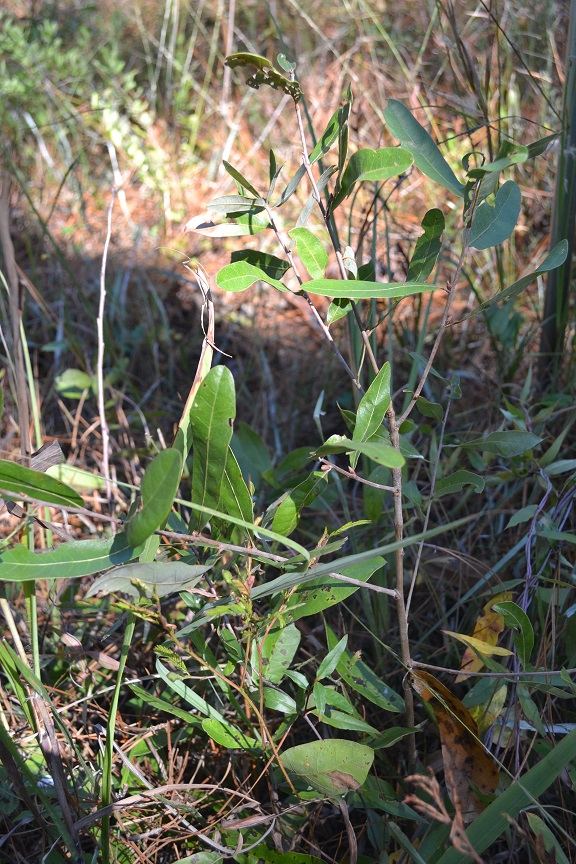Difference between revisions of "Quercus incana"
Krobertson (talk | contribs) |
|||
| Line 30: | Line 30: | ||
''Quercus incana'' is restricted to native groundcover with a statistical affinity in upland pinelands of South Georgia.<ref name=ost>Ostertag, T.E., and K.M. Robertson. 2007. A comparison of native versus old-field vegetation in upland pinelands managed with frequent fire, South Georgia, USA. Pages 109–120 in R.E. Masters and K.E.M. Galley (eds.). Proceedings of the 23rd Tall Timbers Fire Ecology Conference: Fire in Grassland and Shrubland Ecosystems.</ref> | ''Quercus incana'' is restricted to native groundcover with a statistical affinity in upland pinelands of South Georgia.<ref name=ost>Ostertag, T.E., and K.M. Robertson. 2007. A comparison of native versus old-field vegetation in upland pinelands managed with frequent fire, South Georgia, USA. Pages 109–120 in R.E. Masters and K.E.M. Galley (eds.). Proceedings of the 23rd Tall Timbers Fire Ecology Conference: Fire in Grassland and Shrubland Ecosystems.</ref> | ||
| − | ===Phenology=== <!--Timing off flowering, fruiting, seed dispersal, and environmental triggers. Cite PanFlora website if appropriate: http://www.gilnelson.com/PanFlora/ --> | + | <!--===Phenology===--> <!--Timing off flowering, fruiting, seed dispersal, and environmental triggers. Cite PanFlora website if appropriate: http://www.gilnelson.com/PanFlora/ --> |
===Seed dispersal=== | ===Seed dispersal=== | ||
According to Kay Kirkman, a plant ecologist, this species disperses by gravity. <ref name="KK"> Kay Kirkman, unpublished data, 2015. </ref> | According to Kay Kirkman, a plant ecologist, this species disperses by gravity. <ref name="KK"> Kay Kirkman, unpublished data, 2015. </ref> | ||
| − | + | <!--===Seed bank and germination===--> | |
| − | <!--===Seed bank and germination=== | ||
<!--===Fire ecology===--> <!--Fire tolerance, fire dependence, adaptive fire responses--> | <!--===Fire ecology===--> <!--Fire tolerance, fire dependence, adaptive fire responses--> | ||
<!--===Pollination===--> | <!--===Pollination===--> | ||
| Line 40: | Line 39: | ||
<!--===Diseases and parasites===--> | <!--===Diseases and parasites===--> | ||
==Conservation and management== | ==Conservation and management== | ||
| − | |||
==Cultivation and restoration== | ==Cultivation and restoration== | ||
==Photo Gallery== | ==Photo Gallery== | ||
<gallery widths=180px> | <gallery widths=180px> | ||
| − | |||
File:Quercus incana.JPG| <center> ''Quercus incana'' <p> Photo by Kevin Robertson </p> | File:Quercus incana.JPG| <center> ''Quercus incana'' <p> Photo by Kevin Robertson </p> | ||
| − | |||
</nowiki></gallery> | </nowiki></gallery> | ||
| − | |||
==References and notes== | ==References and notes== | ||
Revision as of 14:11, 15 September 2016
| Quercus incana | |
|---|---|

| |
| Photo taken by Kevin Robertson | |
| Scientific classification | |
| Kingdom: | Plantae |
| Division: | Tracheophyta- Vascular plants |
| Class: | Magnoliopsida - Dicotyledons |
| Order: | Fagales |
| Family: | Fagaceae |
| Genus: | Quercus |
| Species: | Q. incana |
| Binomial name | |
| Quercus incana W. Bartram | |

| |
| Natural range of Quercus incana from USDA NRCS Plants Database. | |
Common name: Bluejack oak
Contents
Taxonomic notes
Synonyms: Quercus cinerea Michaux; Q. humilis Wlater
Description
A description of Quercus incana is provided in The Flora of North America.
Distribution
Ecology
Habitat
Quercus incana is restricted to native groundcover with a statistical affinity in upland pinelands of South Georgia.[1]
Seed dispersal
According to Kay Kirkman, a plant ecologist, this species disperses by gravity. [2]
Conservation and management
Cultivation and restoration
Photo Gallery
References and notes
- ↑ Ostertag, T.E., and K.M. Robertson. 2007. A comparison of native versus old-field vegetation in upland pinelands managed with frequent fire, South Georgia, USA. Pages 109–120 in R.E. Masters and K.E.M. Galley (eds.). Proceedings of the 23rd Tall Timbers Fire Ecology Conference: Fire in Grassland and Shrubland Ecosystems.
- ↑ Kay Kirkman, unpublished data, 2015.
